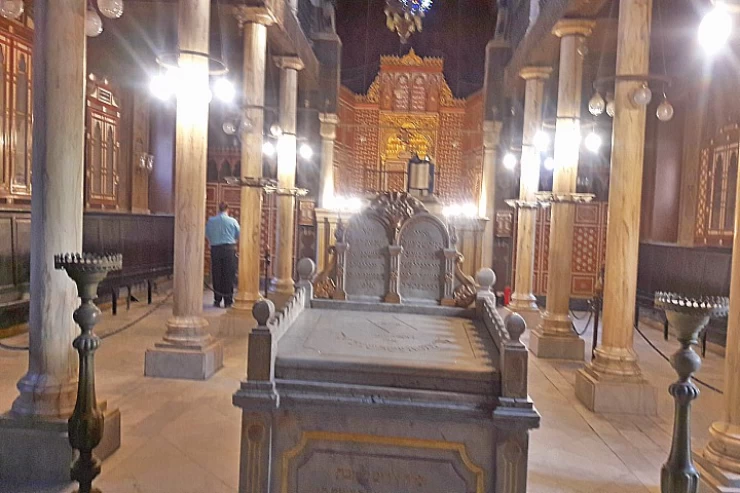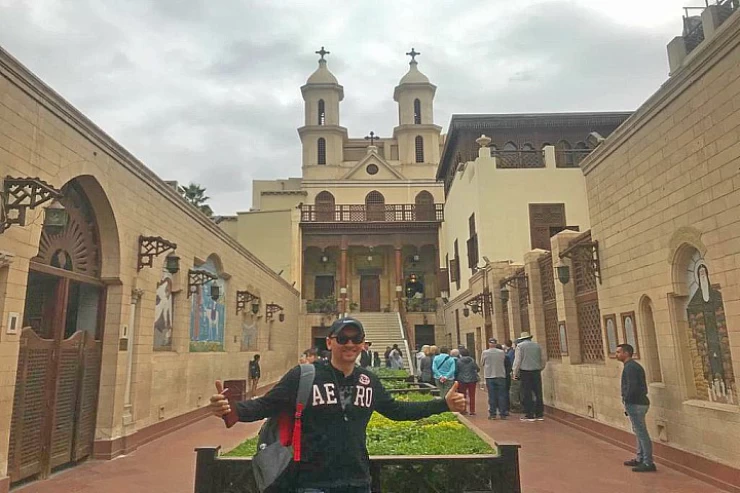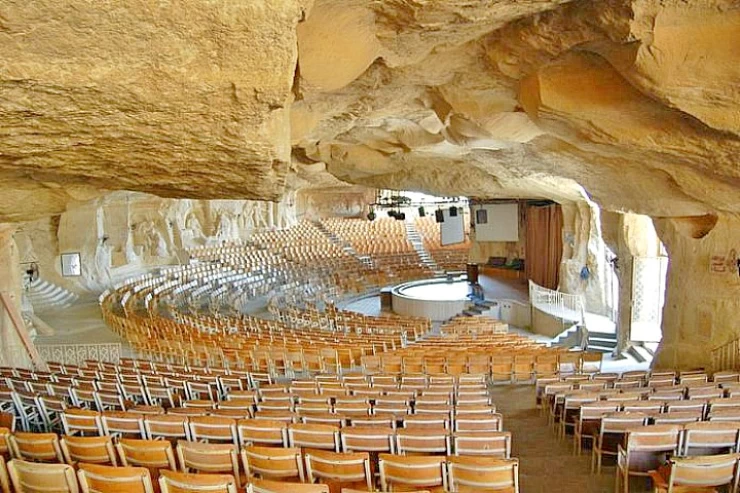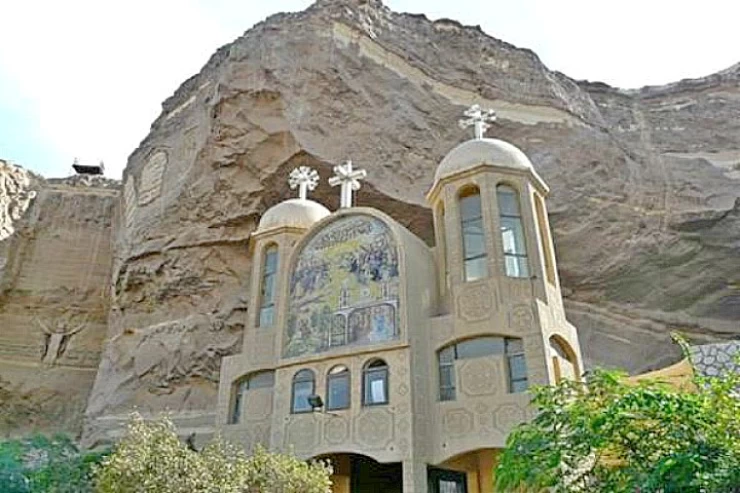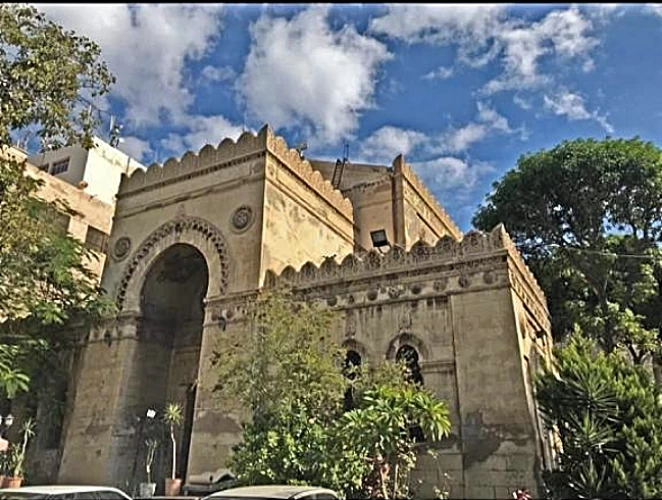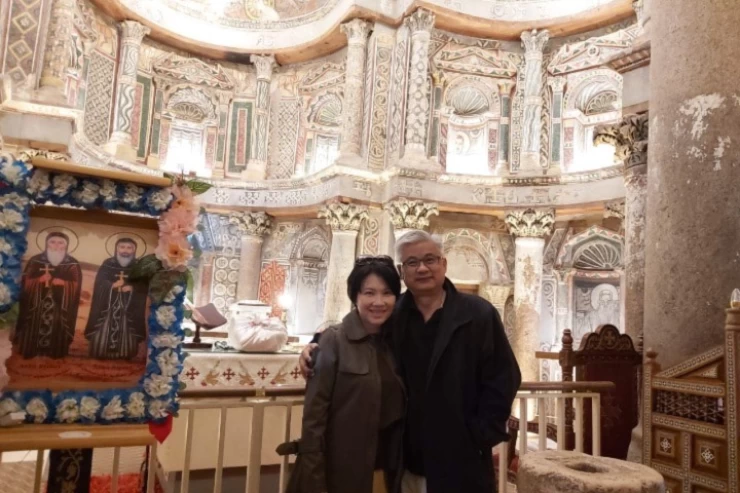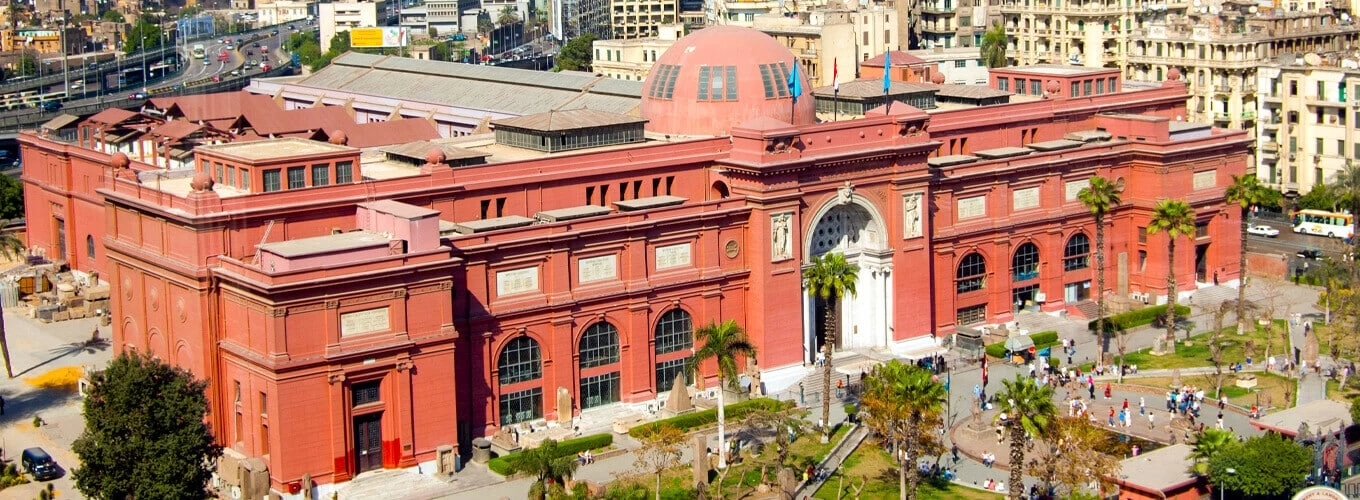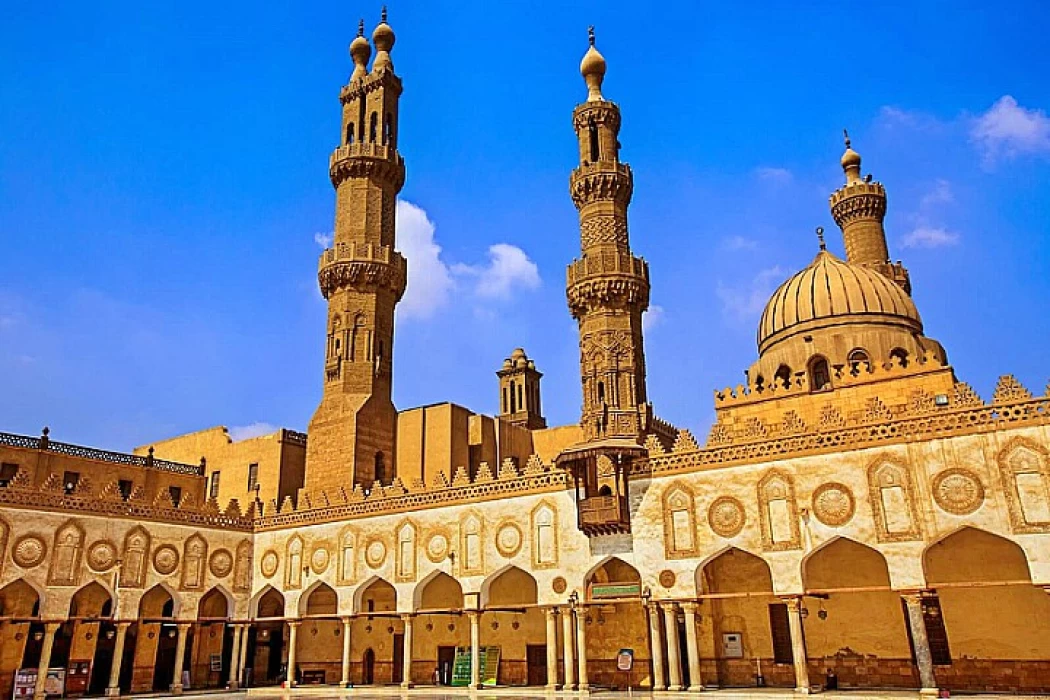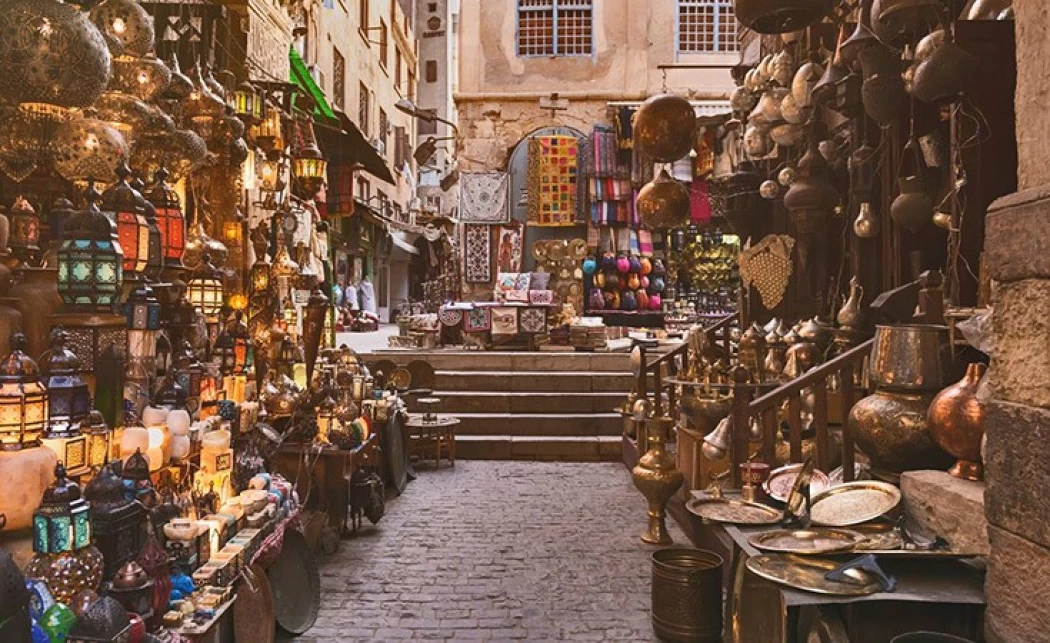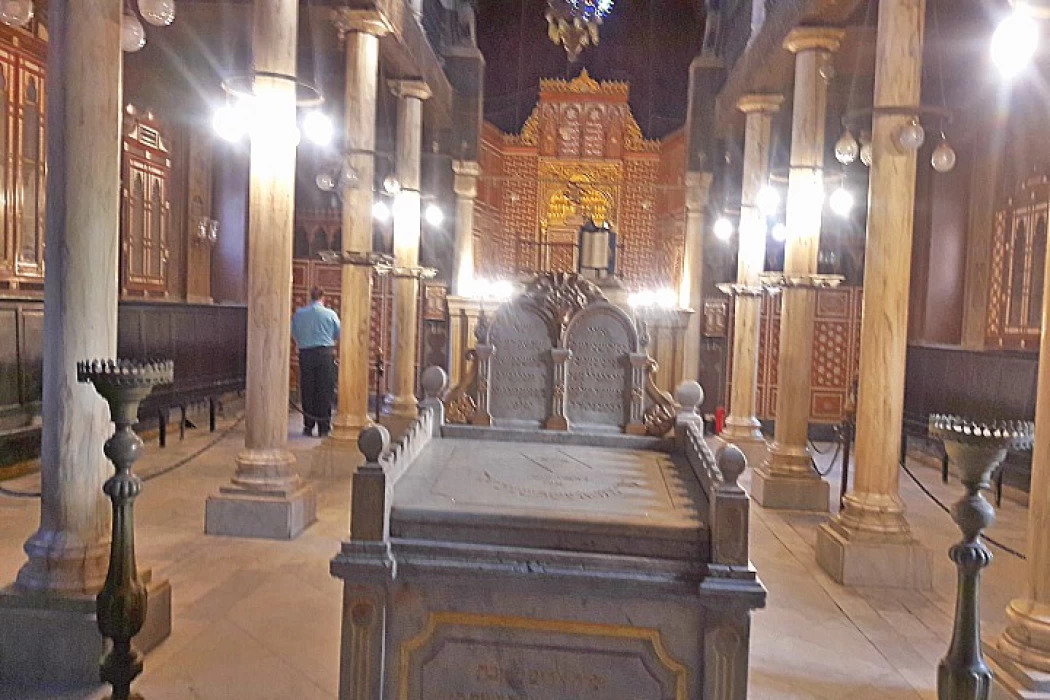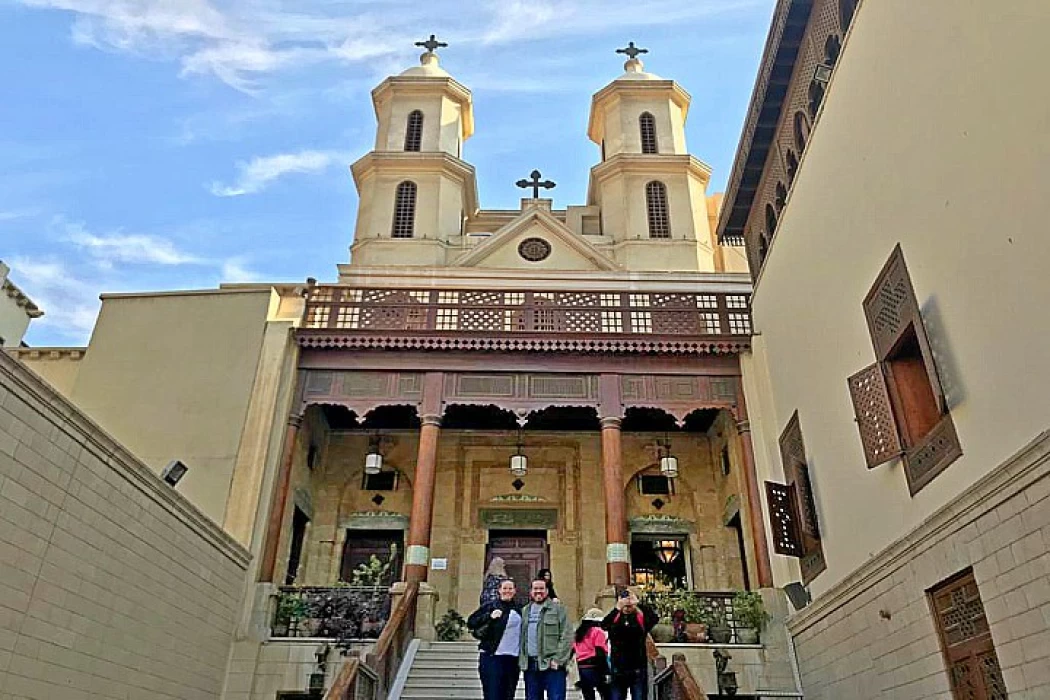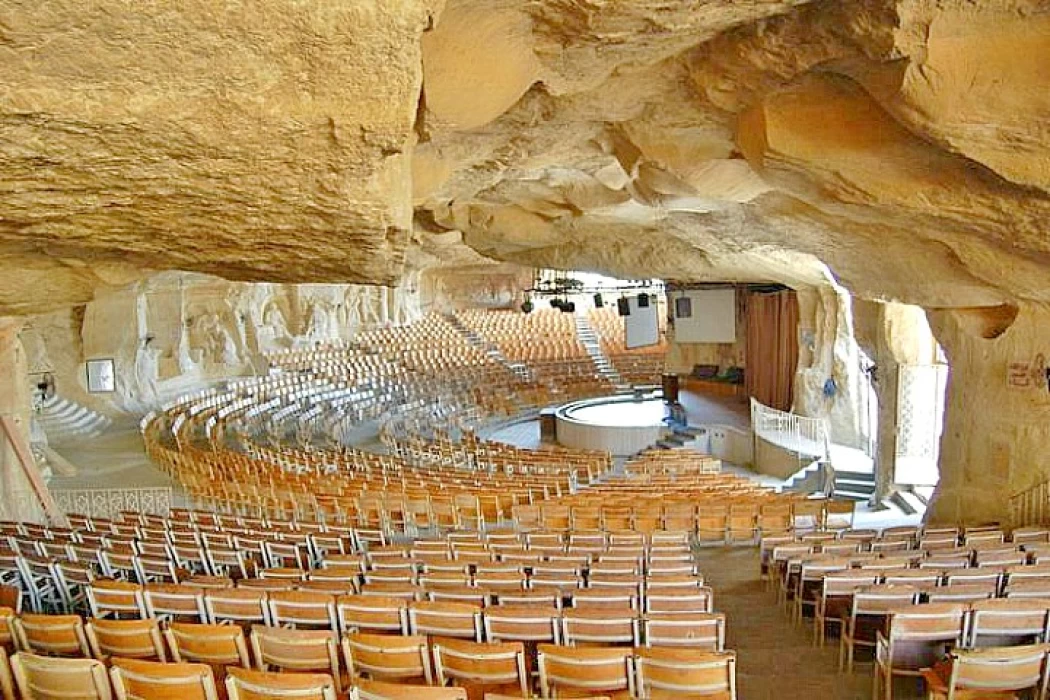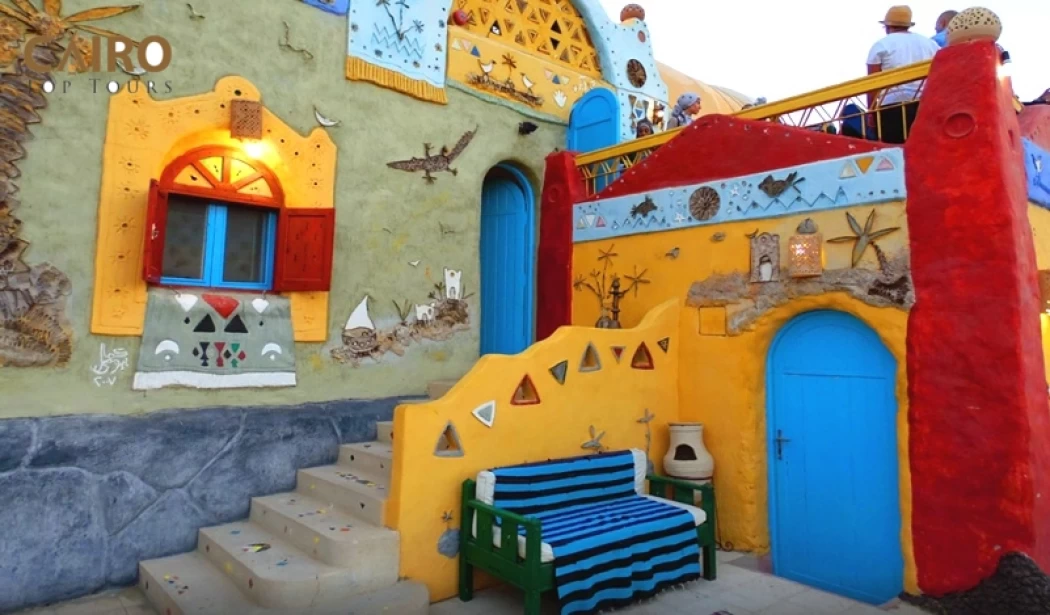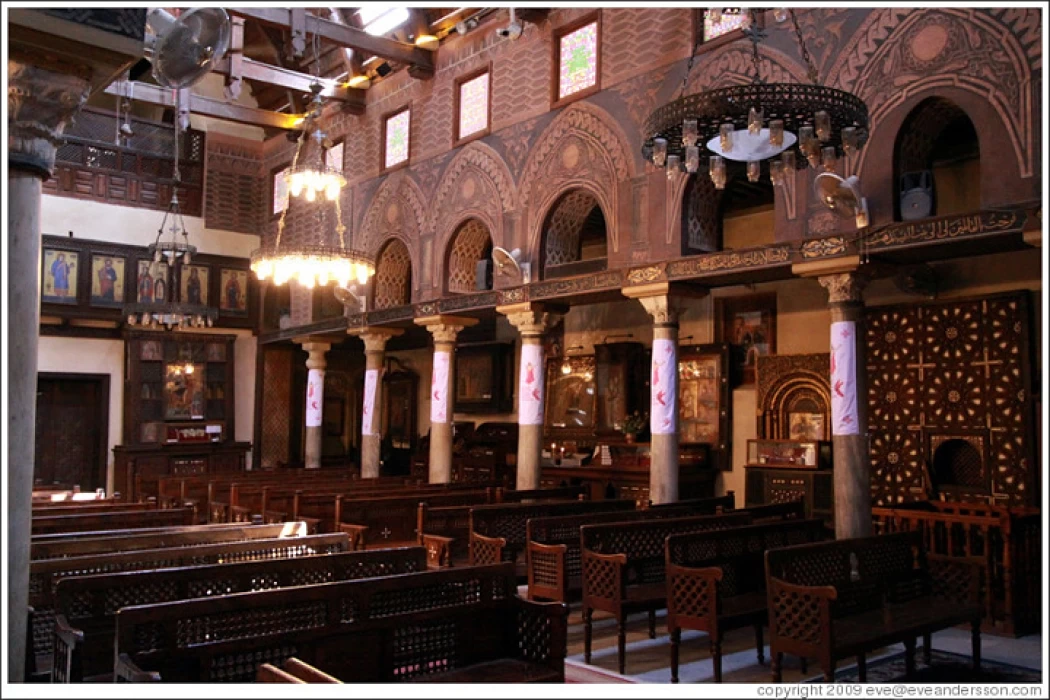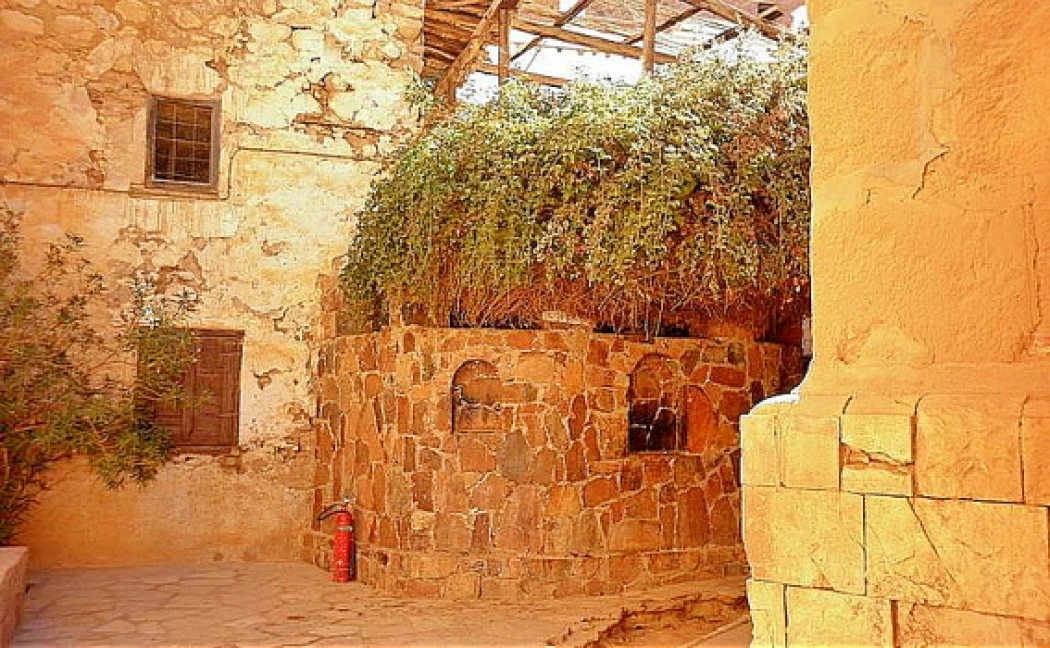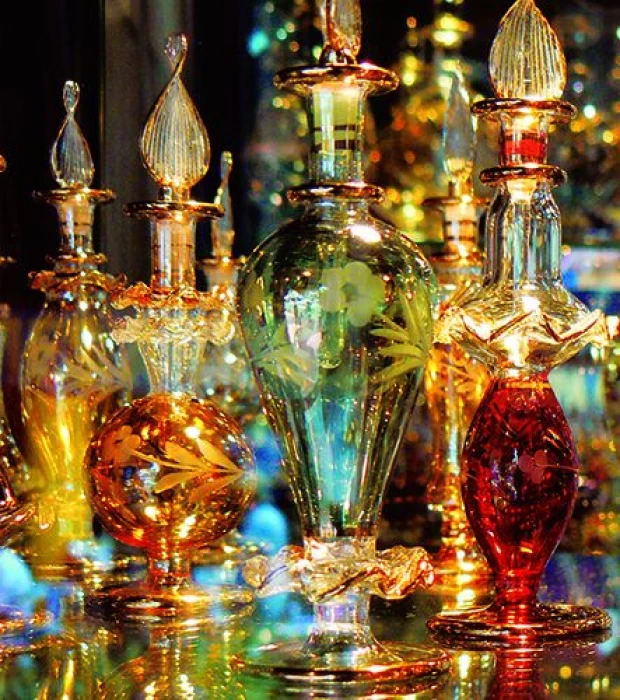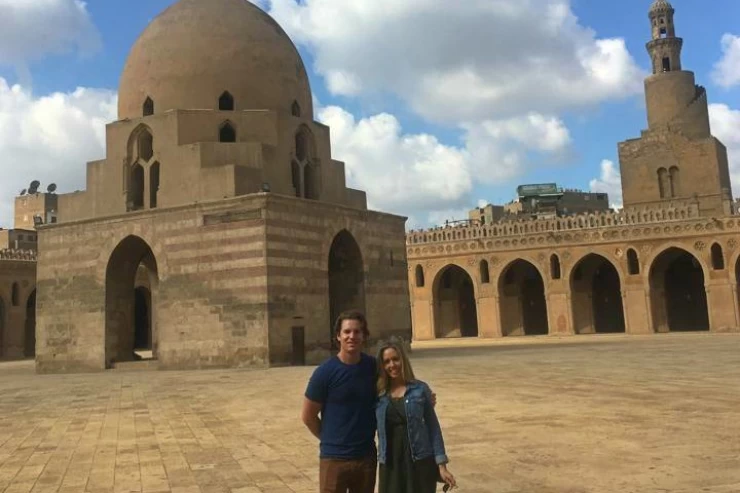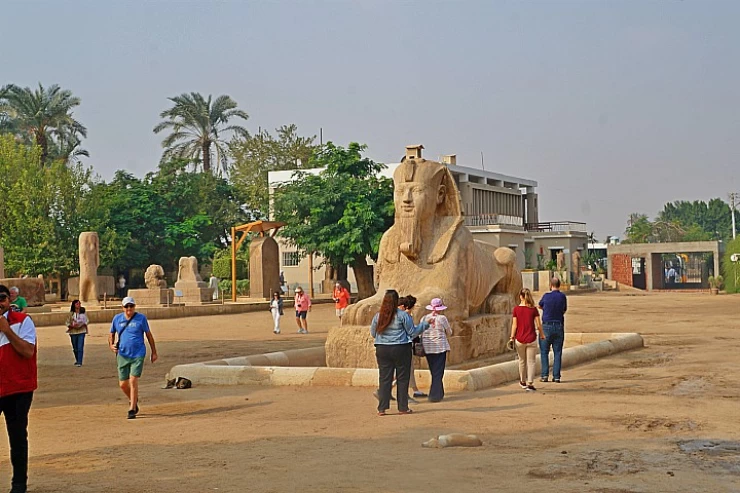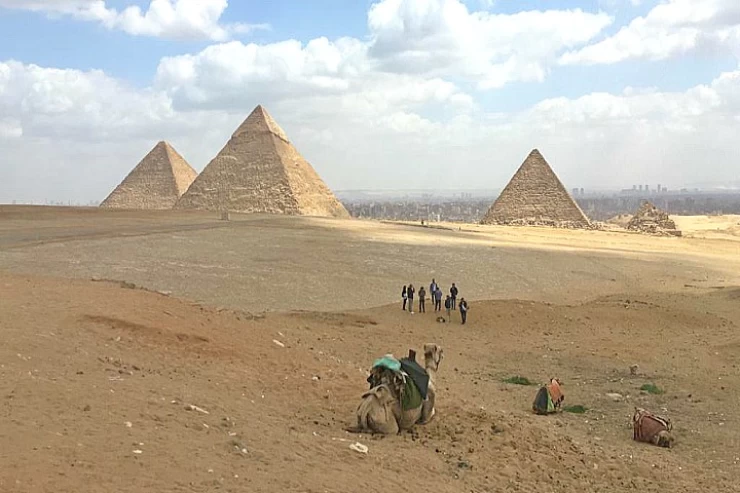不寻常的开罗一日游,前往科普特开罗和圣西蒙洞穴教堂
Overview
科普特开罗之旅和圣西蒙洞穴教堂
科普特开罗之旅是探访埃及基督教传入初期建造的早期基督教纪念碑和修道院的最佳方式。开罗顶级旅游公司经验丰富的导游将带您开启一段引人入胜的开罗之旅,包括参观老开罗的科普特教堂、洞穴教堂以及位于莫卡塔姆山的圣西蒙修道院。
在科普特开罗之旅中,您将有机会游览开罗的垃圾城,并参观老开罗最重要的教堂之一。我们的埃及一日游还包括在顶级餐厅享用美味的午餐。
我们将在参观独特的阿尔瑞法伊清真寺的同时,了解伊斯兰文化。之后,我们将前往汗哈利利集市。
以上是伊斯兰开罗和科普特开罗的一些引人入胜的文化和历史景点,游客可以在游览这座古城期间探索和享受。
科普特开罗之旅和圣西蒙洞穴教堂
科普特开罗之旅是探访埃及基督教传入初期建造的早期基督教纪念碑和修道院的最佳方式。开罗顶级旅游公司经验丰富的导游将带您开启一段引人入胜的开罗之旅,包括参观老开罗的科普特教堂、洞穴教堂以及位于莫卡塔姆山的圣西蒙修道院。
在科普特开罗之旅中,您将有机会游览开罗的垃圾城,并参观老开罗最重要的教堂之一。我们的埃及一日游还包括在顶级餐厅享用美味的午餐。
我们将在参观独特的阿尔瑞法伊清真寺的同时,了解伊斯兰文化。之后,我们将前往汗哈利利集市。
以上是伊斯兰开罗和科普特开罗的一些引人入胜的文化和历史景点,游客可以在游览这座古城期间探索和享受。
Inclusion
酒店往返交通。
开罗一日游行程中提及景点的门票和费用。
前往科普特开罗和洞穴教堂的交通由专属空调车辆提供。
在一家不错的餐厅享用当地午餐。
埃及全程持证导游。
科普特开罗之旅期间免费提供瓶装水。
开罗购物之旅(如果您有要求)。
价格包含开罗旅游的所有税费和服务费。
Exclusion
科普特开罗和洞穴教堂行程中未指定的额外费用。
小费不包含在您的埃及旅游价格中。
用餐期间的饮料。
斋月期间,旅游景点于下午 3:00 关闭,因此旅游通常提前一小时开始。
此价格适用于埃及圣诞节和新年旅游或埃及复活节旅游。
Itinerary
我们的持证导游将在您下榻的开罗或吉萨酒店大堂举着写有您姓名的牌子迎接您。您的开罗一日游将从臭名昭著的垃圾城开始。垃圾城位于开罗,宛如一个来自另一个世界的聚居地。它因当地居民从事垃圾收集工作而得名,他们回收开罗大部分垃圾以谋生。
最后,您将有幸参观洞穴教堂,这座在埃及闻名的圣西蒙制革匠修道院是一座意义非凡的教堂。据当地人称,这座教堂与一个超自然事件有关,圣西蒙的信仰使这座山峰移动。它位于开罗东南部的莫卡塔姆山,由山体凿刻而成。要到达教堂,您需要经过特定的路线。
您的私人司机和专业导游将带您开启科普特开罗之旅。享用美味午餐后,您将有机会探索古罗马巴比伦要塞遗址,参观建于公元3世纪、供奉圣母玛利亚的悬空教堂。这座教堂悬挂在要塞的两座主塔上。您还将有机会参观圣谢尔盖教堂,又称洞穴教堂,据说是圣家族在埃及时期的住所。最后,您将参观本以斯拉犹太教堂,它很可能是古埃及时期法老宫殿的所在地,在尼罗河中,婴儿先知摩西的篮子就是在这里被发现的。
结束科普特开罗之旅和圣西缅洞穴教堂后,您将被送回酒店。
Price
| Number of Persons | Prices |
|---|---|
| 1 Person | $140 Per Person |
| 2 - 3 Persons | $90 Per Person |
| 4 - 6 Persons | $75 Per Person |
| 7 - 10 Persons | $60 Per Person |
Start from : 60
Check Availability
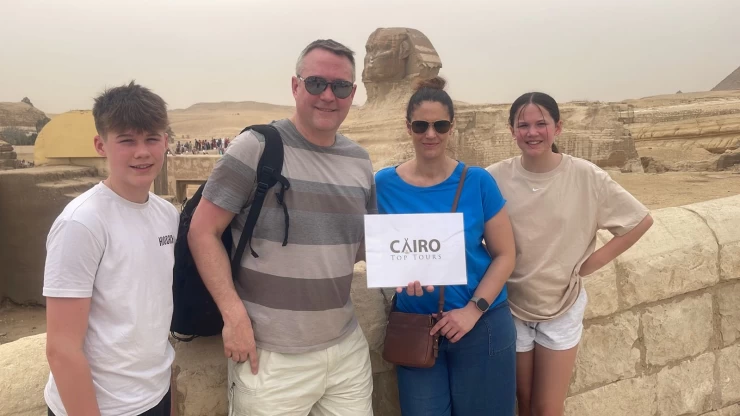
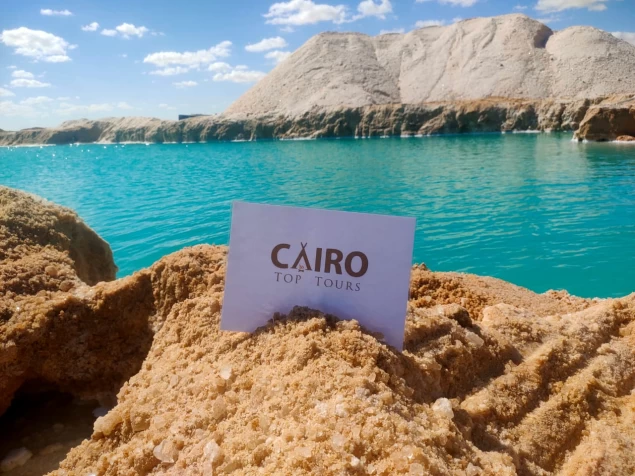
You Also May Like
Looking for something different? check out our related tour now, or simply contact us to tailor made your Egypt tour
吉萨金字塔与埃及博物馆开罗之旅
如果你想访问埃及,开罗是你理想的探索目的地。通过你参观埃及博物馆和吉萨金字塔,可以看到古埃及人在建筑艺术方面的神奇技艺。
埃及博物馆、科普特古城和伊斯兰开罗之旅
探索伊斯兰开罗宏伟的清真寺,感受开罗老城的历史魅力。深入了解科普特开罗的丰富遗产,这里有著名的地标性建筑和教堂,圣家族曾在此栖息,并拥有独特的圣像。此外,千万不要错过参观开罗埃及博物馆(Egyptian Museum)的机会,那里的展品令人叹为观止。
开罗吉萨金字塔、萨卡拉和孟菲斯一日游
在令人叹为观止的旅程中,参观闻名遐迩的吉萨金字塔,感叹埃及法老的伟大。在开罗之旅中,您可以探索这座历史悠久的埃及首都,这里到处都是金字塔和古墓,您还可以了解它的秘密。
开罗中途停留转机之旅
哈里里汗是一个露天市场,是了解当代埃及丰富的风俗和文化的窗口。在这里,您可以结识当地的手工艺人,为独一无二的纪念品讨价还价,还可以尽情享受这里弥漫的香料和芳香。
埃及之旅和中东评论
从我们的社交媒体账户、Trip Advisor 和 YouTube 视频中可以看到,埃及一日游(Egypt Tours)获得了许多客户的积极反馈,他们非常喜欢我们的低价埃及游,因为我们的专家会陪同他们游览埃及的每一个地方,向他们展示埃及和圣地游期间参观的每个景点的历史。您可以从我们的社交媒体账户、Trip Advisor 和 YouTube 视频中看到,埃及一日游(Egypt Day Tour)获得了很多客户的积极反馈,他们都非常喜欢我们的低价埃及游,因为我们的专家会陪同他们游览埃及和圣地的每一个地方,向他们展示每个景点的历史。
Yes, Egypt is significant for Christian pilgrimage due to its association with the Holy Family's journey. You can visit sites like the Church of St. Sergius and the Hanging Church in Coptic Cairo
Egyptian cuisine is known for its rich and flavorful dishes, often featuring a combination of herbs, spices, and fresh ingredients. When visiting Egypt, be sure to try these famous Egyptian dishes to savor the local flavors:
- Koshari: Often considered Egypt's national dish, koshari is a hearty and satisfying vegetarian meal. It consists of layers of rice, macaroni, lentils, chickpeas, and fried onions, topped with a spicy tomato sauce and garlic vinegar.
- Ful Medames: This popular Egyptian breakfast dish is made from mashed fava beans seasoned with olive oil, garlic, and lemon juice. It's often served with pita bread and garnished with fresh vegetables and herbs.
- Molokhia: Molokhia is a traditional Egyptian green soup made from jute leaves. It's typically cooked with garlic, coriander, and sometimes chicken or rabbit. It's served with rice or bread.
- Ta'ameya (Egyptian Falafel): Similar to falafel in other Middle Eastern cuisines, ta'ameya is made from ground fava beans or chickpeas mixed with herbs and spices. It's deep-fried and often served on pita bread with tahini sauce and salad.
- Mahshi: Mahshi refers to stuffed vegetables, which can include zucchini, eggplant, bell peppers, and vine leaves. The stuffing typically consists of a mixture of rice, minced meat (or just rice for vegetarian versions), and aromatic herbs.
- Sayadeya: This is a flavorful fish dish made with a thick tomato-based sauce that's seasoned with onions, garlic, and spices. It's often served with rice.
- Hawawshi: Hawawshi is an Egyptian-style meat pie made with seasoned ground beef or lamb stuffed inside a round bread roll and baked until crispy on the outside.
- Moussaka: Egyptian moussaka is different from the Greek version. It's a layered dish made with eggplant, tomatoes, minced meat, and a creamy béchamel sauce.
- Roz Bel Laban: This is a classic Egyptian dessert made from rice pudding flavored with rosewater and topped with pistachios or almonds. It's a delightful way to end a meal.
- Basbousa: Basbousa is a sweet semolina cake soaked in simple syrup and often garnished with almonds or coconut. It's a popular dessert and a sweet treat to enjoy with a cup of tea or coffee.
- Feseekh: For adventurous foodies, feseekh is a traditional Egyptian dish of fermented and salted mullet fish. It's often eaten during the Sham El Nessim holiday but may not be suitable for all tastes.
The Cave Church of Saint Simeon, also known as the Monastery of St. Simon the Tanner, is a significant historical and religious site in Cairo, Egypt. While it is not currently designated as a UNESCO World Heritage Site, it is still an important and remarkable place with historical and religious significance.
The significance of the Cave Church of Saint Simeon lies in the following aspects:
Historical Importance: The church is carved into the Mokattam Mountain, dating back to the 4th century AD. Its history is intertwined with the early Christian period in Egypt, reflecting the endurance and resilience of Egypt's Christian community over the centuries.
Architectural Marvel: The church's unique location and construction make it a remarkable architectural achievement. It is carved into the mountain and consists of three main levels, including the upper church, the lower church, and the cave itself. The cave's high ceiling and spacious interior make it a captivating space for visitors.
Religious Significance: The church is dedicated to Saint Simeon the Tanner, a Coptic Christian saint known for his devout faith. He is particularly famous for the story of moving a mountain through his faith, which is linked to the church's location in the Mokattam Mountains.
Coptic Christianity: The Cave Church is an important pilgrimage site for Coptic Christians in Egypt. It serves as a place of worship, reflection, and spiritual connection for the Coptic community.
Tourist Attraction: Beyond its religious significance, the Cave Church has become a tourist attraction, drawing visitors from around the world who are interested in exploring Egypt's Christian heritage and the stunning cave architecture.
Community and Outreach: The church and its surrounding area also have a significant social and community presence. It is known for its efforts in providing support and services to the impoverished neighborhood of Manshiyat Naser, known as "Garbage City," and the nearby Zabbaleen community.
Exploring Coptic Cairo, also known as Old Cairo or Christian Cairo, is a unique journey into the historical and religious heart of the city. Here's the best way to explore this fascinating district:
Plan Your Visit: Decide on the places you want to explore in Coptic Cairo. The district is home to several churches, synagogues, monasteries, and historic sites, so plan your itinerary in advance.
Appropriate attire: Coptic Cairo is home to numerous religious sites, so dress modestly. Cover your shoulders and knees, and consider carrying a scarf or shawl to cover your head if you plan to enter churches or monasteries.
Visit the Hanging Church (Saint Virgin Mary's Coptic Orthodox Church): This is one of the most famous and historically significant churches in Coptic Cairo. Admire its unique architecture, beautiful interior, and ancient relics. It's advisable to visit early to avoid crowds.
Explore the Coptic Museum: Located near the Hanging Church, the Coptic Museum houses a vast collection of Coptic art, manuscripts, and artifacts. It's an excellent place to learn about the history and art of Coptic Christianity.
Discover the Church of St. Sergius and Bacchus (Abu Serga): This ancient church is believed to have been built on the site where the Holy Family rested during their flight to Egypt. It's a place of great religious significance and architectural beauty.
Visit the Ben Ezra Synagogue: This historic synagogue is said to have been built on the site where baby Moses was found in the Nile. Explore its unique architecture and learn about its history.
Explore Babylon Fortress: This ancient Roman fortress played a crucial role in the defense of early Christian communities. You can see the remains of the fortress and a few ancient churches.
Wander the Historic Streets: Coptic Cairo is a maze of narrow, winding streets and alleys. Take your time to wander through the area, explore its historical architecture, and discover hidden gems.
Sample Local Food: Coptic Cairo has many traditional Egyptian restaurants and street food vendors. Try local dishes and sweets like koshari, falafel, and baklava.
Engage with the Locals: Interact with the friendly local residents and shopkeepers. Many of them are happy to share stories and insights about the area.
Participate in Religious Services: If you're interested, you can attend religious services in the churches. These services offer a unique glimpse into Coptic Christian traditions and spirituality.
Take guided tours: Consider taking guided tours of Coptic Cairo to gain a deeper understanding of the history and significance of the sites you're visiting. Knowledgeable guides can provide cultural and historical context.
Non-Egyptian travelers must have a valid passport for at least 6 months after their arrival, and all international tourists who desire to visit Egypt must obtain a visa. You can obtain a pre-entry tourist visa from any Egyptian embassy or consulate worldwide. There are three types of visas in Egypt. Any foreigner visiting in Egypt for objectives other than tourism, such as work or study, must get a one-month entry visa. To enter the country, you must have a valid entrance visa. Non-Egyptian visitors entering Egypt for transit are issued a transit visa. Tourist visas are valid for up to three months. Visitors entering Egypt through the overland border post in Taba to visit the Gulf of Aqaba coast and St. Catherine may be freed from visas and issued a fourteen-day free residence permit. Tourist visas are available upon arrival in Egypt for citizens of Japan, Hong Kong, North America, Croatia, Canada, Australia, Norway, New Zealand, Georgia, the Russian Federation, Serbia, Ukraine, the United Kingdom and the United States, Macedonia, the Republic of Korea, Singapore, and Malaysia. Citizens of the following countries are required to get a pre-arrival visa:Afghanistan, Algeria, Armenia, Azerbaijan, Bosnia and Herzegovina, Chechnya, Croatia, Georgia, India, Indonesia, Iraq, Iran, Israel, Kazakhstan, Kirghizia, Lebanon, Macao, Macedonia, Moldavia, Montenegro, Morocco, Pakistan, Palestine, The Philippines, Russia, Serbia, Slovenia, Sri Lanka, Tadzhikistan, Thailand, Tunisia, Turkmenistan, Ukraine, Uzbekistan, and all African
Egypt's religious history and sites hold immense significance for tourists due to their historical, cultural, and spiritual importance. Here's why they are compelling for visitors:
- Ancient Civilization.
- Architectural Marvels.
- Cultural Heritage.
- Spiritual Significance.
- Tourist Attractions.
- UNESCO World Heritage Sites
- Educational Value.
The Cave Church of Saint Simeon, or the "Church of Saint Simeon Al-Kharaz", has great importance in the history of the Christian religion in Egypt. This church is considered a very sacred place and a center for religious visits for Coptic Christians and tourists who come to Egypt.
Holy Place: It is believed that the church was built in the place where Saint Simon Al-Kharaz, or the executioner, who lived during the period of the Islamic conquest in Egypt, lived. It is believed that he lived in a cave located under the church, and the cave has been renovated and equipped to become a religious shrine.
Importance of a religious visit: The Cave Church attracts thousands of annual visitors who wish to pray and ask for a blessing from Saint Simeon. Coptic Christians believe that Saint Simeon is the patron saint of difficult matters and consider their visit to this site an opportunity for spiritual connection and to ask the saint for prayers and grace.
It is recommended to wear comfortable clothing and shoes suitable for walking, as well as modest clothing for visiting religious sites.
Coptic Cairo refers to the historic Christian neighborhood in Cairo, Egypt. It is home to a significant number of Coptic Orthodox churches, monasteries, and other religious sites. Coptic Cairo is known for its rich Christian heritage and is considered one of the oldest Christian communities in the world.
Numerous Christian churches, monasteries, and other places of worship may be found in Coptic Cairo, a historic neighborhood of Cairo. Nestled in the heart of Coptic Christian culture, it's one of the city's oldest neighborhoods.


Cairo Top Tours Partners
Check out our partners
